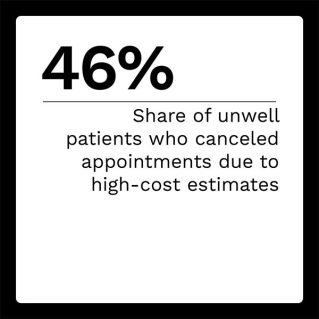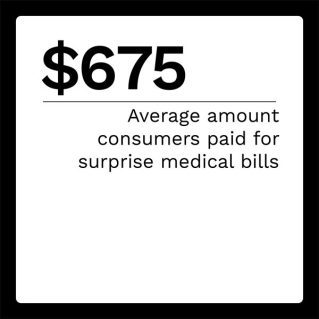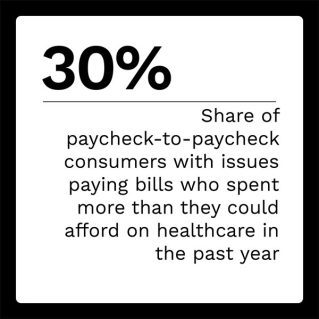Long before recent inflationary pressures challenged consumers financially, healthcare costs were rising, worsening patients’ ability to access and pay for care. PYMNTS’ data found that nearly half of consumers have canceled a healthcare appointment not because their condition improved, but because of the high cost of the medical treatment.
Patients’ lack of access to accurate cost estimates before a healthcare appointment or procedure too often results in either unexpected or unexpectedly large bills. In the past 12 months, nearly half of patients who received inaccurate cost estimates or an unexpected bill spent more than they could afford.
Healthcare providers that provide patients with timely and accurate estimates for out-of-pocket healthcare expenses improve the patient experience. There are consequences for failing to provide these, however. Our data shows that six out of 10 patients who paid out-of-pocket healthcare costs and received either an inaccurate cost estimate or an unexpected bill are “very” or “extremely” interested in switching healthcare providers for a better payments experience.
For “The Healthcare Conundrum: The Impact of Unexpected Patient Costs on Care,” a PYMNTS and Experian Health collaboration, we surveyed 2,483 consumers to learn about the effects of rising healthcare costs on patient care, including how accurate and timely cost estimates drive patient satisfaction and improve care.
• Three-quarters of millennials canceled a healthcare appointment after receiving a high cost estimate, as have 60% of consumers living paycheck to paycheck with issues paying their bills. Among consumers who had canceled a healthcare appointment for a reason other than their condition had improved before the appointment, 46% reported that receiving a high cost estimate was their main reason for canceling an appointment or procedure. Millennials were the most likely to do so, at 74%, while just 13% of baby boomers and seniors had canceled for the same reason. Sixty percent of consumers living paycheck to paycheck with issues paying their bills canceled due to a high cost estimate, whereas just 25% of those not living paycheck to paycheck did the same.
• More than two in five patients who received inaccurate cost estimates said they spent more on healthcare than they could afford. PYMNTS’ research found that overall, 19% of patients experienced financial distress due to healthcare costs because they spent more than they could afford in the past 12 months. Patients who received cost estimates, however, were more likely to be in financial distress due to healthcare costs: 43% of those who received inaccurate cost estimates said they spent more on healthcare than they could afford, as did 26% of those who received accurate estimates. Patients who received unexpected bills were also more apt than average to be in financial distress, as 40% of respondents said they spent more on healthcare than they could afford.
• Patients living paycheck to paycheck are most vulnerable to experiencing financial distress caused by unexpected healthcare costs. In the past 12 months, 30% of patients living paycheck to paycheck with issues paying their bills experienced financial distress because they spent more on healthcare than they could afford. Just 11% of patients not living paycheck to paycheck were in financial distress due to healthcare costs during the same period. We also found that 27% of patients living paycheck to paycheck with issues paying their bills did not have enough money to pay for their last appointment, whereas that share was just 4.6% for consumers not living paycheck to paycheck.
Healthcare providers that provide patients with timely and accurate estimates for out-of-pocket healthcare expenses improve the patient experience and, in turn, retain existing patients and attract new ones.
To learn more about how rising healthcare costs affect patient care, download the report.

